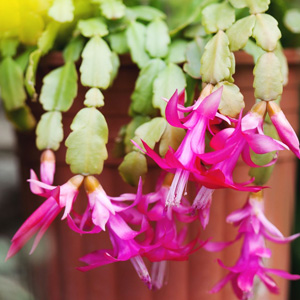Gardening Tasks & Tidbits:

• Overgrown perennials should be divided and replanted now so they can establish well before the colder weather arrives.
• Continue to keep your poinsettias, Christmas cactus and Kalanchoe in night time darkness so they may set their blooms.
• Mow lawns less frequently now: St. Augustine Grass- 3”-4”, Zoysia- 2”-2.5”, Centipede- 1.5”-2.0”
• Be aware that even though the cooler weather will lessen certain populations of insects, not all of them will disappear. Aphids, beetles, cutworms, cabbage worms, corn earworms, leaf miners, mole crickets, leaf hoppers, leaf rollers, squash bugs and other beasties will still be around to munch on your plants if you are not watchful. Be sure to carefully read the labels before applying any chemicals to your garden.
Frequently Asked Questions:
1. My plants are covered in a black fungus! What do I do?
This is very confusing for customers as the first inclination is to spray with a fungicide to remove the black fungus from the foliage. While this will help eradicate the sooty mold it will not cure the underlying problem of a bug infestation-usually aphids, whiteflies, or scale. If your plants are quite black those bugs have been there for awhile. Treat your plants with an insecticide that will remove and control the bugs to keep your plants fungus free. Horticultural Oil or Spinosad are two good products to use.
2. When can I trim…..?? or, can I trim now….?
Most of the trimming should be done by now. Trimming encourages new growth so plants that have been trimmed prior to now will be able to harden off new growth prior to freezing. Hardy shrubbery like viburnum, ligustrum or hollies or trees like oaks and maples may be pruned in the winter, however all other flowering, semi-tropical and tropical plants should be trimmed as little as possible until spring.
3. My “rose/bougainvillea/flowering plant never blooms!
First determine if your plant is in the right location. Most flowering plants require full sun! If your plant has a lush, full, green appearance and is growing extremely well- but never flowers- the plants may be receiving too much nitrogen in the fertilizer it is getting. Stop in the Garden Center for advice on how to improve this problem. Do not fertilize bougainvillea in the fall-wait until it starts to flush in the spring.
4. My fruit/berry tree never produces well!
Again, make sure the plant is in the right location- ideally full sun. Fruit trees especially require a minimum of 6 hours of full sun. Secondly, if your tree flowers but no fruit presents- (a) you may not have sufficient honey bees pollinating your trees or (b) your irrigation spray head hits the tree directly when it is on- which will knock the blooms off or (c) the tree was sprayed with an insecticide when in flower or (d) there is too much nitrogen in the fertilizer you are using which makes for lush growth but no flowers.
5. Crape Myrtles may be trimmed by the end of February. “Crape Murder” – the practice trimming Crape Myrtles all the way back to the trunks, is not a recommended practice. Shaping a tree, removing crossing branches and suckers are all good practices but trimming branches back that are larger than the diameter of your little finger, is not. Repeatedly doing this not only causes unsightly gnarls and galls but will shorten the life of your tree.
Trimming Crape Myrtles too early can cause a flush of new growth if warmer temperatures occur, which will cause damage when another freeze occurs.
Our professionals at VerdeGo can assist with many of your garden problems! Stop by and ask us.